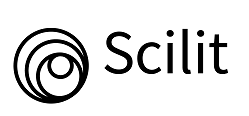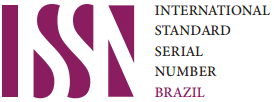Health professional safety front to the patient in psychomotor agitation
DOI:
https://doi.org/10.25118/2763-9037.2022.v12.382Keywords:
psychomotor agitation, aggressive behavior, job securityAbstract
Patients in psychomotor agitation represent risks for health professionals, others present and for themselves. Thus, this article aims to acknowledge the protocols related to the promotion of safety, specifically, of health professionals in relation to patients in psychomotor agitation. As for the method, it is an integrative review in PubMED, SciELO, Science Direct and BVS databases. After applying the criteria, 15 articles were selected from which four main categories were identified and analyzed: safety actions and protocols for aggressive patients (behavioral, environmental, organizational, pharmacological and physical management); causes, predictive factors and identification of the unstable patient; training of health professionals and reporting of incidents. After analyzing these factors, an early and rapid assessment of the patient's condition is of great importance so that there is an appropriate management, taking into account their individuality. Furthermore, it is necessary that professionals have solid knowledge about the different measures, that there is efficient organization of the team and protocols established in the places of health promotion. For this, professional training must be implemented and maintained in The form of continuing education, addressing the different managements and their moments of use, valuing the constant improvement of methods for these patients, for all health professionals. Furthermore, the notification of cases by professionals should be encouraged, after all, the underreporting of cases presents itself as a problem for the collection of estimates about aggressions resulting from psychomotor agitation. Therefore, clear guidelines and standard operating procedure should be encouraged, seeking to keep professional environments safe for all.
Downloads
Metrics
References
Baldaçara LR, Ismael F, Leite V, Pereira LA, Santos RM, Gomes Júnior VP, Calfat ELB, Diaz AP, Périco CAM, Porto DM, Tung TC. Brazilian guidelines for the management of psychomotor agitation. Part 1. Non-pharmacological approach. Brazilian Journal of Psychiatry. 2019;41(2):153–67. https://doi.org/10.1590/1516-4446-2018-0163 - PMid:30540028 - PMCid:PMC6781680
Baldaçara LR, Diaz AP, Leite V, Pereira LA, Santos RM, Gomes Júnior VP, Calfat ELB, Ismael F, Périco CAM, Porto DM, Zacharias CEK, Cordeiro Q, Silva AG. Brazilian guidelines for the management of psychomotor agitation. Part 2. Pharmacological approach. Brazilian Journal of Psychiatry. 2019;41(4):324-35. https://doi.org/10.1590/1516-4446-2018-0177 - PMid:30843960 PMCid:PMC6804299
BRASIL. Lei de benefícios da previdência social. Artigo 19 da Lei 8213/91. Lei nº 8.213, de 24 de julho de 1991. Brasília, DF; 1991. https://presrepublica.jusbrasil.com.br/legislacao/104108/lei-de-beneficios-da-previdencia-social-lei-8213-91#art-19
Hardin D. Strategies for nurse leaders to address aggressive and violent events. J Nurs Adm. 2012;42(1):5-8. https://pesquisa.bvsalud.org/portal/resource/pt/mdl-22157374
Brasić JR, Fogelman D. Clinical safety. Psychiatric Clinics of North America. 1999;22(4):923–40. https://doi.org/10.1016/S0193-953X(05)70134-9 - PMid:10623979
Mantovani C, Migon MN, Alheira FV, Del-Ben CM. Manejo de paciente agitado ou agressivo. Revista Brasileira de Psiquiatria. 2010;32(suppl 2):S96–103. https://doi.org/10.1590/S1516-44462010000600006 - PMid:21140077
Holloman G, Zeller S. Overview of Project BETA: best practices in evaluation and treatment of agitation. Western Journal of Emergency Medicine. 2012;13(1):1–2. https://doi.org/10.5811/westjem.2011.9.6865 - PMid:22461914 PMCid:PMC3298232
Garriga M, Pacchiarotti I, Kasper S, Zeller SL, Allen MH, Vázquez G, Baldaçara LR, San L, McAllister-Williams RH, Fountoulakis KN, Courtet P, Naber D, Chan EW, Fagiolini A, Möller HJ, Grunze H, Llorca PM, Jaffe RL, Yatham LN, Hidalgo-Mazzei D, Passamar M, Messer T, Bernardo M, Vieta E. Assessment and management of agitation in psychiatry: expert consensus. The World Journal of Biological Psychiatry. 2016;17(2):86–128. https://doi.org/10.3109/15622975.2015.1132007 - PMid:26912127
Altemir M, Arteaga A. A protocol to prevent and deal with aggressive behaviour against health workers. Enfermería Clínica (English Edition). 2018 Mar;28(2):125–32. https://doi.org/10.1016/j.enfcle.2017.09.002 - PMid:29107451
León MM. El riesgo emergente que constituyen las agresiones y violencia que sufren los médicos en el ejercicio de su profesión: el caso de España. Rev Bioét. 2010;18(2):maio-ago. https://pesquisa.bvsalud.org/portal/resource/pt/lil-577706
Rossi J, Swan MC, Isaacs ED. The violent or agitated patient. Emergency Medicine Clinics of North America. 2010;28(1):235–56. https://doi.org/10.1016/j.emc.2009.10.006 - PMid:19945609
Sainz Pinós C, Maestre Naranjo M, Bordas Olivas J, Cabrero Martín B, Rodríguez de la Pinta, ML, Triverio L, Federico P. Protocolo de actuación frente a situaciones conflictivas con los ciudadanos en centros de atención primaria. Med Segur Trab. 2011;57(222):5–14. https://pesquisa.bvsalud.org/portal/resource/pt/ibc-89939
Beattie J, Griffiths D, Innes K, Morphet J. Workplace violence perpetrated by clients of health care: a need for safety and trauma-informed care. J Clin Nurs. 2019; 28(1-2):116–24. https://doi.org/10.1111/jocn.14683 - PMid:30300949
Powell D, Hobgood T. Detection and management of the unstable patient. Facial Plastic Surgery Clinics of North America. 2005;13(1):169–80. https://doi.org/10.1016/j.fsc.2004.04.012 PMid:15519936
Cork A, Ferns T. Managing alcohol related aggression in the emergency department (Part II). Int Emerg Nurs. 2008;16(2):88–93. https://pesquisa.bvsalud.org/portal/resource/pt/mdl-18519059
Jiménez Busselo MT, Aragó Domingo J, Nuño Ballesteros A, Loño Capote J, Ochando Perales G. Atención al paciente agitado, violento o psicótico en urgencias: un protocolo pendiente para una patología en aumento. Anales de Pediatría. 2005;63(6):526–36. https://doi.org/10.1016/S1695-4033(05)70253-8 - PMid:16324619
Kawakami D, Prates JG, Teng CT. Propostas para o futuro: estrutura física e equipe ideal nas emergências psiquiátricas. Debates em Psiquiatria. 2016;6(4):28–33. https://revistardp.org.br/revista/article/view/125
Cerchiaro LC. Agressões de pacientes a profissionais de saúde mental: o agir em relação ao comportamento inesperado. [Dissertação de Mestrado em Ambiente, Saúde e Sustentabilidade]. São Paulo: Universidade de São Paulo, Faculdade de Saúde Pública; 2017. https://doi.org/10.11606/D.6.2017.tde-24072017-182307
Wong AH, Ray JM, Cramer LD, Brashear TK, Eixenberger C, McVaney C, Haggan J, Sevilla M, Costa DS, Parwani V, Ulrich A, Dziura JD, Bernstein SL, Venkatesh AK. Design and implementation of an agitation code response team in the emergency department. Annals of Emergency Medicine. 2022;79(5):453-464. https://doi.org/10.1016/j.annemergmed.2021.10.013
Oostrom JK, van Mierlo H. An evaluation of an aggression management training program to cope with workplace violence in the healthcare sector. Res Nurs Health. 2008;31(4):320–328. https://doi.org/10.1002/nur.20260 - PMid:18228608
Wong AH, Ruppel H, Crispino LJ, Rosenberg A, Iennaco JD, Vaca FE. Deriving a framework for a systems approach to agitated patient care in the emergency department. Jt Comm J Qual Patient Saf. 2018;44(5):279–292. https://doi.org/10.1016/j.jcjq.2017.11.011 - PMid:29759261
Barros REM, Marques JMA, Carlotti IP, Zuardi AW, Del-Ben CM. Short admission in an emergency psychiatry unit can prevent prolonged lengths of stay in a psychiatric institution. Revista Brasileira de Psiquiatria. 2009;32(2):145–51. https://doi.org/10.1590/S1516-44462009005000014 - PMid:20027489

Downloads
Published
How to Cite
Conference Proceedings Volume
Section
License
Copyright (c) 2022 Geovanna Rosada Fernandes, Heloize Schultz Machado, Mariana de Souza Barros, Laura Rocha Campos Bahls, Gabriela Fernandes Costa, Elaine Rossi Ribeiro

This work is licensed under a Creative Commons Attribution-NonCommercial 4.0 International License.
Debates em Psiquiatria allows the author (s) to keep their copyrights unrestricted. Allows the author (s) to retain their publication rights without restriction. Authors should ensure that the article is an original work without fabrication, fraud or plagiarism; does not infringe any copyright or right of ownership of any third party. Authors should also ensure that each one complies with the authorship requirements as recommended by the ICMJE and understand that if the article or part of it is flawed or fraudulent, each author shares responsibility.
Attribution-NonCommercial 4.0 International (CC BY-NC 4.0) - Debates em Psiquiatria is governed by the licencse CC-By-NC
You are free to:
- Share — copy and redistribute the material in any medium or format
- Adapt — remix, transform, and build upon the material
The licensor cannot revoke these freedoms as long as you follow the license terms. Under the following terms:
- Attribution — You must give appropriate credit, provide a link to the license, and indicate if changes were made. You may do so in any reasonable manner, but not in any way that suggests the licensor endorses you or your use.
- NonCommercial — You may not use the material for commercial purposes.
No additional restrictions — You may not apply legal terms or technological measures that legally restrict others from doing anything the license permits.





























